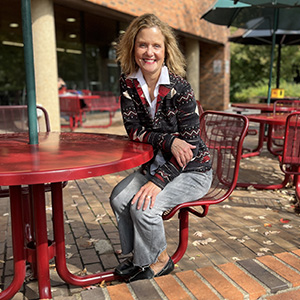U of M online courses are a “high-quality” and “engaging” experience
It was around St. Patrick’s Day 2020 when Minnesotans were asked by their governor to shelter in place. Everyone except those workers deemed “essential” were asked to restrict their public interactions and conduct business from inside their homes.
In response, the University of Minnesota, among the top ten largest universities in the country, suspended in-person classes and events and set about converting many of its offerings for online delivery. For the College of Continuing and Professional Studies professional development team, that meant working with more than 30 instructors to retool courses to be delivered using the video conferencing platform Zoom, which had not yet become a household name.
“To ensure that students are still getting the high-quality, practical instruction they’ve come to expect from the U," said Brian Torkkola, program director for professional development programs, "we held group workshops and one-on-one coaching sessions to get instructors comfortable and proficient with the various tools in Zoom, such as breakout rooms, polling, chat, and white boarding. It was also important that course activities be modified so that course participants aren’t just staring at a monitor all day.”
“I had used Zoom very little, since I do all my classes in person, face to face,” says Dick DeBlieck, who instructs management and project management courses for the U. “The program staff gave tutorials on how to operate Zoom and coached us on instructional design. You can’t just copy/paste a course meant to be delivered in the real world into the virtual world. The guidance I received in redesigning course structure was extremely helpful.”
Within a couple weeks, more than 80 courses in business analysis, Agile, human resources, and project management, to name a few, had been reshaped for virtual delivery.
“So far, feedback has been positive, both from students and instructors,” says Torkkola.
“I like taking the class using Zoom and appreciate the flexibility, given where we’re at,” says Stacy Turos. She started the Leadership Essentials Certificate in April and is enjoying the online classrooms. Turos says she chose the U’s professional development program because of the in-depth curriculum and strong, positive reviews it gets. “So far, the classes have been outstanding and the instructors share such depth of knowledge.”
Julia Miller agrees: “The transition was seamless.” Miller is part of a group of 30 completing the Project Management Certificate. She oversees operations for the Hennepin County Employee Career Center, which arranged for colleagues in her unit to go through the program together. The group had taken two courses in the certificate in person before moving to attending class virtually. “We had multiple communications from the CCAPS team leading up to the first course, with information on how to use the technology, which was really helpful because there were many in our cohort who weren’t at all familiar with it,” she says.
“When someone is unsure about a concept or theory, they can send a written chat instead of interrupting and slowing the momentum of the presentation,” says Miller, who has a master’s in organization management and has experience teaching in-person classes. “With people raising their hands to get clarification or side-talking, it can get distracting. It’s so much easier to manage different personalities and styles in the virtual environment.”
Miller says she believes that the transition to online professional course delivery at the U has been successful because the instructors are professional and relatable. “They deliver the content in plain, human-centered language, and break up the lessons with small group discussions and other activities. And they make adjustments for different learning styles. The Zoom platform is easy to navigate and allows for engagement between participants. Everyone is engaged. I can’t say enough about it.”








